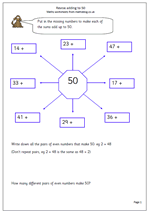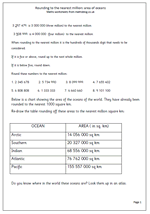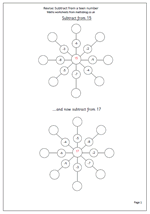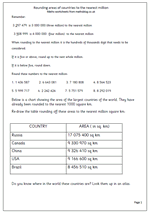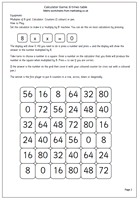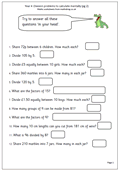Here is a snappy little worksheet to check that children can add on from 2-digit numbers to make 50. There are several different mental strategies that can be used, but the most efficient is usually to count on to the next whole ten and then count on in tens to 50.
Watch out for a common error whereby children add on to make 10 and then add on again from the original tens number; this will give them a total 10 more than is correct.
